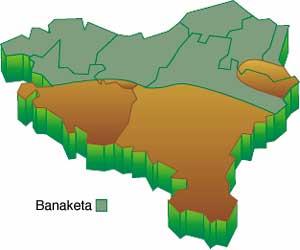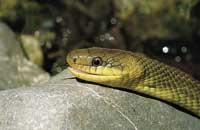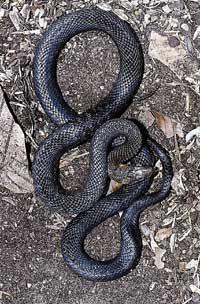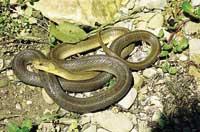The Eskulapio, patron of health

In the roots of European cultures, stories and myths abound that considered snakes a bad and terrifying being. Pliny himself, the serpent, claimed that they were beasts born from the backbone of the most dead human beings, and other beliefs point to being born from the eggs of chickens fertilized by the devil, and from then on they feed on toads, harbors and all kinds of poisonous plants to produce their own eden.
If we turn to the Bible, the malice of the serpent appears as the main motor of the sin of Adam and Eba. And likewise, in most medieval European mythologies, dragons were the most feared and malevolent creatures. After all, dragons have giant snakes, giant snakes that depend on witchcraft and biosphere forces.

However, fear and distrust of snakes has a totally cultural origin and has not been the same in all peoples or in all historical moments. The soft and slender serpent Elaphe longissima, of reddish brown back and yellowish belly, was considered patron of health in ancient peoples, and the Greeks, for example, believed that Asklepio was minister of the god of health.
Asklepio — or Eskulapio, for the Romans —, son of Apollo, was the master of medicine, and usually represented at the feet the rooster and the serpent rolled in the arm. And at the same time, in the temple that was built in the Greek city of Epidauro thousands of snakes gathered waiting for the order of the fairy goddess. On that path, admiration and respect for the snakes of Asklepio or Eskulapio remained even when Roman culture prevailed, and Caesar Tiberius, for example, fearing that in his last years some disease would hit him and kill him, kept his room full of snakes of this type to ensure his protection.
Today the Eskulapio snake is still considered a symbol of medicine and we can see its image in the mouths of our towns and cities, wrapped around a glass.
The manufacturing snake (Elaphe longissima) is very slender, fast, very moved by the earth and a regular swimmer. However, his ability to climb the trees is enormous, since the limes on the edges of the free sides of the ventral scales are of great help. Despite being sunny, it does not like too much heat, and its preferred temperature ranges between 26 and 30 ° C, hiding in search of a cooler shelter if the environment exceeds 32 ° C. Therefore, the Eskulapio snake lives mostly by day, although, from time to time, in one way or another, it can also be seen at sunset in search of some piece of hunting.
As for their diet, adult specimens feed mainly on micromammals (rats, mice, basasnos, satain, satitsu, liron, etc. ), birds (especially ducks and eggs) and other reptiles (especially lizards and lizards). Its pieces are fastened with the mouth and are sacrificed by constriction before being devoured. For their part, young individuals capture lizards and invertebrates to satisfy their appetite, being the most common shackles, grasshoppers and other insects. His enemies, however, are the Culebrera eagle (Circaetus gallicus), and the Marta (Tuesday Tuesday), the Garduña (Tuesday foina), the Turbia (Mustela putorius), the badger (Meles meles), among others.

The manufacturing snake is an elegant and showy animal of seso. Narrow and well defined head, with rounded beginini and its dorsal scales, launas, rhomboidal, smooth or weak. As for color, in adults the reddish brown predominates in the dorsal part, and on the lighter sides, passing to the belly to the light. Although they usually do not have prominent drawings, sometimes soft longitudinal strokes can be seen in some specimens. The lobby is a little darker, with light and weak yellow spots on both sides of the neck, behind the gag and spreading upwards. As for the size, although they have been measured between 190 and 200 cm, usually vary between 140-170 cm, being the males larger than the females.
In late May, or early June, the Eskulapio snake can offer an incredible show if there is luck. In fact, the time of zeal of these reptiles makes the steps prior to sexual practice spectacular and differentiating. One after the other, at full speed, and after following it, the males hold the female by mouth, neck or dress, and roll up until it gets stuck, in a peculiar position in which the dome develops. Several weeks later, in July or early August, the female lays between 5 and 20 large eggs that hide in some tree hole, stretches of stones, under wrinkles, between leaf litter, etc.
These eggs consist of irregular, whitish and large defensive structures, usually 35-60 mm long, 17-28 mm wide, weighing approximately 10 g. In two months, that is, throughout the month of September or at the beginning of October, hatchlings of between 14 and 25 cm of length are born, which will have to be removed to hibernate in a short time, by the end of October, and like adults, they will have to look for the hole of some micromamant or some stretch of rock that ensures them protection and rest during the long winters.
Although the manufacturing snake is a Central European and Mediterranean species, it has suffered a significant setback throughout Europe and its current distribution is very irregular in humanized regions, Denmark, northern Germany, and is considered missing elsewhere. It is located in the north of the Iberian peninsula, from Catalonia to Galicia.

In the Basque Country you can see above all in the Cantabrian slope, where it is located in the mixed, oak and scrub forests of the hill. Due to the hygrophilous character of the species and its fondness for temperate temperature, this snake is relatively abundant near the coast and does not present significant mountain trends, always below 600 700 m of altitude. As for the Mediterranean side, however, they have hardly been observed in it, but except in more arid areas of the south, it appears in regions that can find the minimum humidity, always under the protection of the freshness of the oak, marojales or quejigales.
Unfortunately, in our culture the last rays of admiration and respect for this beautiful serpent have long been lost, and today the serpent Eskulapio is just that: a serpent. And like the rest of the snakes, the beast is cursed, it must be finished. If we add to this approach the large size of the Eskulapio snake, its evident spectacularity and its calm character, we will easily understand the gravity of the recoil that this species suffers and suffers as a consequence of the direct aggression of the human being: each time it looks less and the specimens are smaller and smaller.
In human pride, not even the pattern of health has a good performance.
Technical information Manufacturing Snake Species: Elaphe longisFamily: colubrOrder: squadradosClass: reptiles |
Buletina
Bidali zure helbide elektronikoa eta jaso asteroko buletina zure sarrera-ontzian











